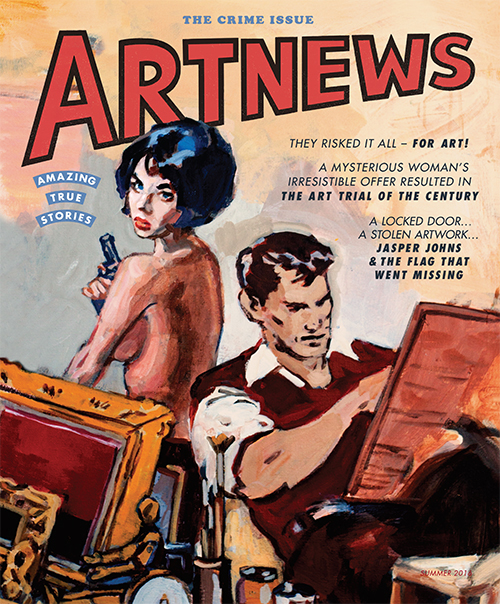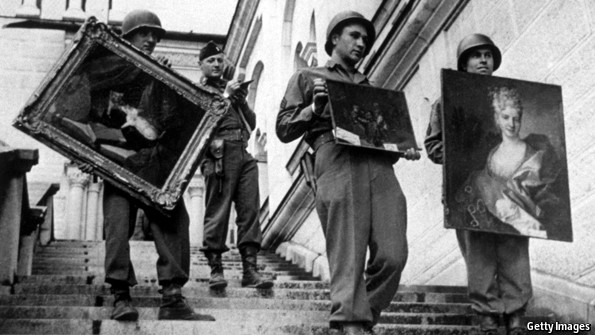
If one could buy a Picasso, a Van Gogh, or a Raphael, could they also invite the public to deface it? Imagine an exhibition allowing visitors to be participants, giving them the green light to paint over Guernica, carve initials into The Starry Night, or tear through a Renaissance Madonna. The resulting chaos would be framed as a new work, the destruction itself its process and product. It recalls Yoko Ono’s Cut Piece (1964), where she invited the audience to cut away her clothing, but this time the object of surrender is not the artist’s body but the cultural idol. The question is simple: if ownership is secured, can one legally destroy what one owns?
The short answer is no… at least, not without consequence. Buying a painting grants physical possession, not absolute control. Ownership is bounded by a web of contractual and statutory obligations that preserve the artist’s moral and economic rights. The art market’s legal framework exists precisely to prevent such acts from occurring, even in private hands (Merryman and Elsen 137). Auction houses like Christie’s and Sotheby’s often include clauses prohibiting modification or destruction of purchased works, and require owners to uphold conservation standards. Violation can trigger breach-of-contract claims or void insurance coverage (Christie’s, “Conditions of Sale”). Even private transactions may contain similar conditions, especially when the artist’s estate is involved.
Additionally, the law proposes several more roadblocks. The U.S. Visual Artists Rights Act of 1990 (VARA) grants artists “moral rights” of attribution and integrity. It allows them to prevent intentional distortion or destruction of works of recognized stature, even after sale (17 U.S.C. §106A). European nations offer stronger protections still. Under French law, moral rights are perpetual and inalienable, extending to the artist’s heirs (Code de la propriété intellectuelle, art. L121-1). To deliberately destroy a masterpiece could therefore invite legal action from the estate or its representative, regardless of ownership.
Cultural context also plays an integral role in the proposed question. Certain nations designate works as national treasures, protected under export or heritage laws. Even within private ownership, the destruction of such works may constitute a criminal act (Prott and O’Keefe 21). Insurance policies add another layer, as intentional damage to covered artworks nullifies coverage and may constitute fraud. The web of legality, ethics, and commerce binds the owner as tightly as the artist.

There are, however, precedents that grasp at the nature of this question. In 1953, Robert Rauschenberg asked Willem de Kooning for a drawing and then erased it, reframing the act as a conceptual collaboration. In other words, destruction was turned into creation, but with the critical factor of consent (Tomkins 98). Meanwhile, artists themselves have destroyed their own works. Examples include Francis Bacon burning canvases, Damien Hirst cutting pieces from his own installations; both acts permitted because the law recognizes authorship differently from ownership (Gamboni 207). The recurring theme is permission: what separates art from vandalism is not intent but authority.
Suppose, instead, that one used a replica or forgery, presented as authentic, to stage the same event. The gesture might generate the desired shock, but the deception alters the meaning. Rather than sacrilege, it becomes performance, critiquing authenticity, market worship, and spectatorship. Yet, the act’s potency would wane once the work is revealed to be fraudulent. The public’s reverence for the “original” is what makes its destruction provocative. Without it, the piece risks being a spectacle without transgression.
In practice, few institutions would host such an exhibition. The cultural and financial ecosystems surrounding masterpieces depend on their preservation. Even an independent exhibition modeled after Courbet’s Pavilion of Realism would face legal injunctions, public outrage, and probable arrest. Still, the thought experiment exposes a paradox: the art world claims to value creative freedom, yet builds elaborate mechanisms to protect its icons from that very freedom.
Owning art, then, is not synonymous with possessing it in full. The law enforces obedience to the artist’s legacy, to the market’s stability, and to society’s sense of heritage. To hand a Picasso to the public and say, “Do what you will,” would be to strip art of its sanctity and to reveal how little of art truly belongs to those who buy it. Until this point, none has dared to step this far into the detournement of another’s work, and for good reason. However, if someone were to throw caution to the wind and dare to set the precedent, the art world would face a truly revolutionary commentary on creative freedom and the societal positioning of art itself.
SOURCES
Christie’s. “Conditions of Sale.” Christie’s Auction Terms and Policies, 2024,
https://www.christies.com/en/
Code de la propriété intellectuelle. Art. L121-1, Legifrance, 2024.
Gamboni, Dario. The Destruction of Art: Iconoclasm and Vandalism since the French Revolution. Reaktion Books, 1997.
Merryman, John Henry, and Albert Elsen. Law, Ethics, and the Visual Arts. 5th ed., Kluwer Law International, 2007.
Prott, Lyndel V., and Patrick J. O’Keefe. Law and the Cultural Heritage, Volume 1: Discovery and Excavation. Professional Books, 1984.
Tomkins, Calvin. Off the Wall: A Portrait of Robert Rauschenberg. Penguin, 2005.
United States Code, Title 17, Section 106A (Visual Artists Rights Act of 1990).






